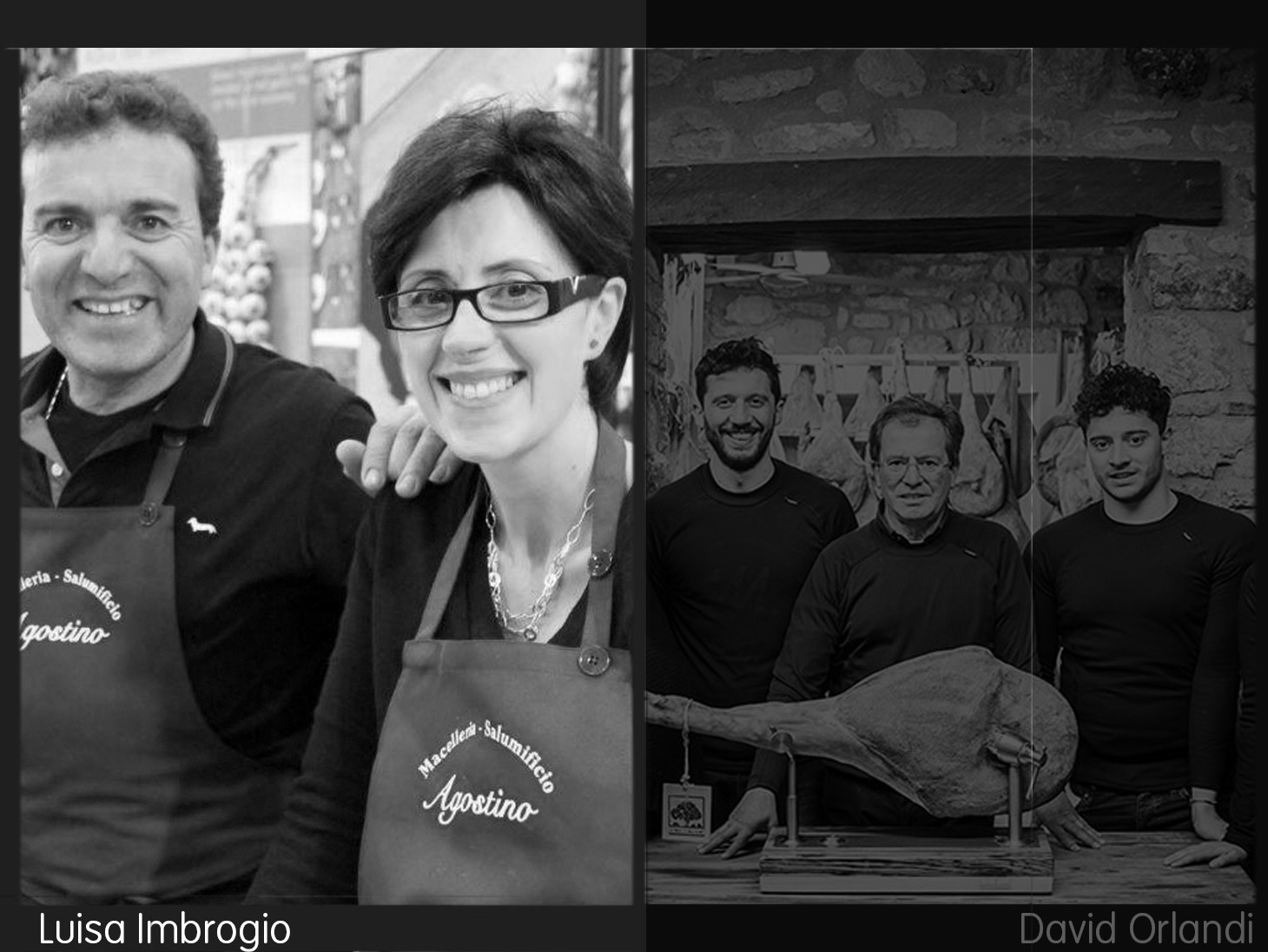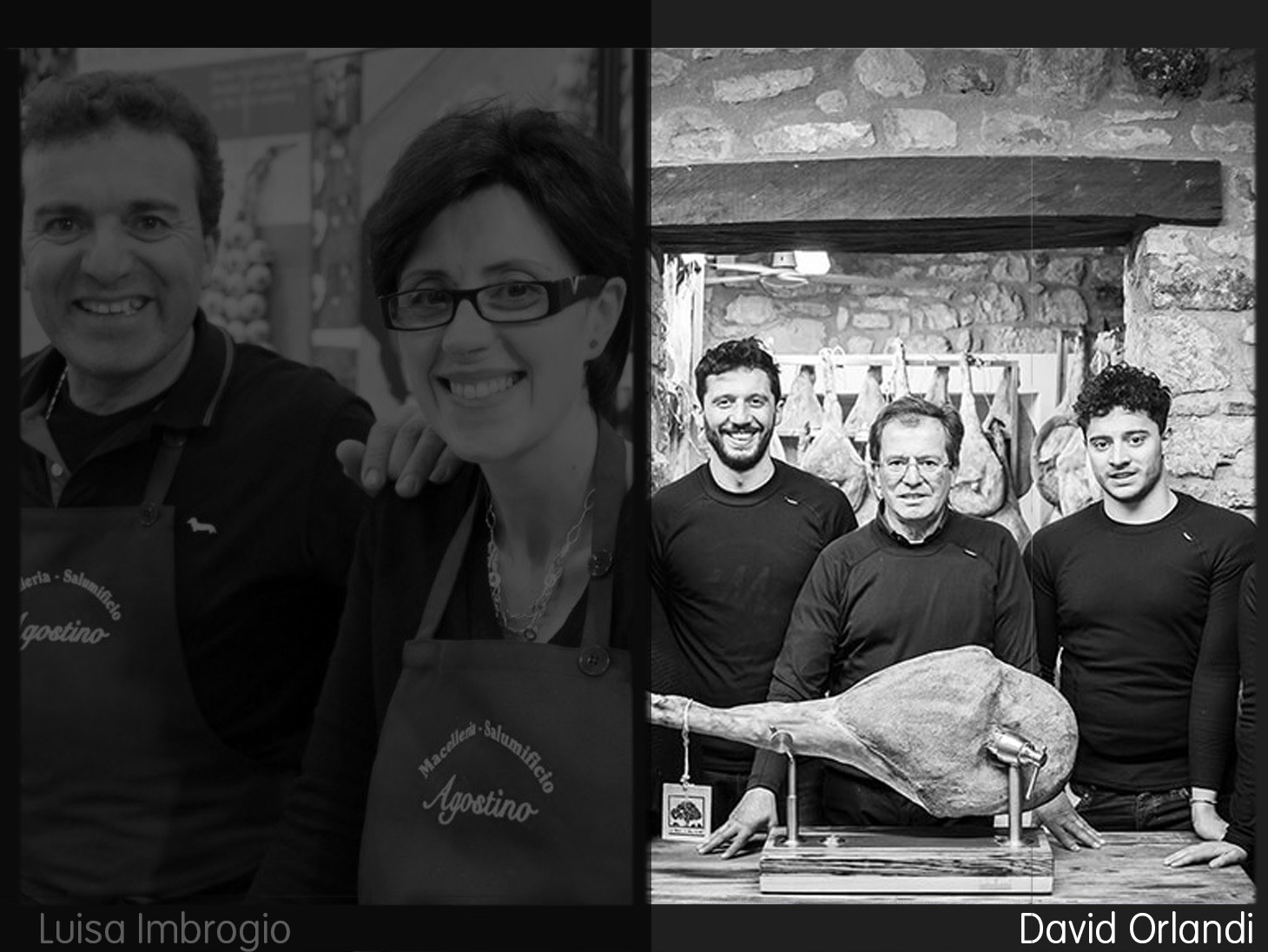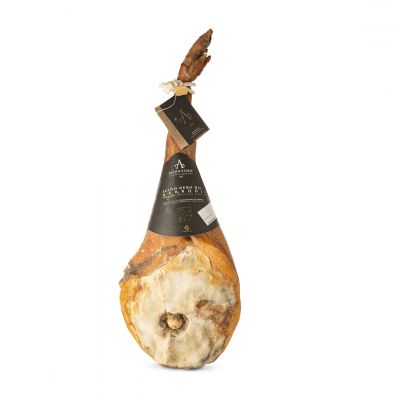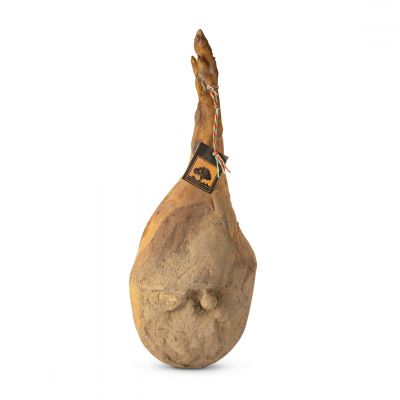Suino Nero dei Nebrodi or Grigio del Casentino? We compare two premium wild bred pork products
⏱ 3 MINUTES READING
“We interviewed Luisa Imbrogio and David Orlandi, to understand the differences between their hams”
AGOSTINO
They have saved the Suino Nero dei Nebrodi from extinction, one of Sicily’s finest pork breeds.
Now that their ham has gained fame thanks to the salubrity and organoleptic qualities of the meat, Luisa and Sebastiano Agostino Ninone are passing the helm onto their son Vincenzo. “This generational passage will bring continuity to all that we have achieved over the last 25 years”, Luisa explains.
“For us, working with the suino nero dei Nebrodi has always been a project for encouraging biodiversity and sustainability, promoting a food we grew up with and the land where we were born, thus supporting the local economy by forging a network”. On 70 hectares of woodland in the Parco dei monti Nebrodi the Agostino farm breeds no more than six animals per hectare, although demand has risen over the years.
This has resulted in the transfer of knowledge, built up over the years and expressed in a set of specifications, to eight other farmers in the local area. The utmost attention is paid to animal health, starting from weaning, at 90 as opposed to 30 days, to boost immune defences and avoid the use of weaning feeds and antibiotics. Such attention is also palpable in the pork ageing process: ham is left to rest in natural stone cellars and the protective lard coating, “sugna”, is scraped off and replaced every three- four months, prepared with rice flour, making it suitable for those affected by coeliac disease too.
Valuable lessons were even learnt during the pandemic, an opportunity to try out lengthier ageing periods.This has culminated in a high quality product, “which deserves to be stored like a fine bottle of perfume, in virtue of the aromas it unleashes”.
LE SELVE DI VALLOLMO
We are in Tuscany, in the Parco Nazionale delle Foreste Casentinesi, a mountainous area of lush woodlands. Here Grigi del Casentino pigs roam free on the lands of Le Selve di Vallolmo, the farm founded by Claudio Orlandi, where his entire family now works.
The Grigio del Casentino is an ancient breed which disappeared over the last century; Claudio resolved to restore it by joining a project focused on Slow Food and the local mountain community.He recreated it by crossing a Large White pig, a modern breed, with a Cinta Senese pig, an ancient autochthonous, yet genetically weaker breed.
David, the last of Claudio’s three children to be involved in the farm, after a few years of office work, explains: “Our pigs roam freely in forests of the National Park. I rear the animals and follow the ageing of hams, which I absolutely love, because I am immersed in nature, at 850 metres above sea level, in close contact with the land where I was born. Together with my parents, my brother Matteo and my sister Serena, we follow every single step in the production chain, which is extremely short: the farm, production facility and ageing cellars are all located in the space of a few kilometres, from the woods to the valley floor."
Animals farmed by the Orlandi family are free to run through the woods: they feed on what they find under trees, from acorns to cherries in the spring. The pigs become truly formidable, weighing in at 180-200 kilos, and develop an excellent percentage of noble fats, which confers a characteristic melt-in-the-mouth texture, accompanied by acorn, nut and cellar notes upon hams obtained from the Grigio del Casentino.
DOUBLE INTERWIEV
1. Product name?
Prosciutto di Suino Nero dei Nebrodi.
2. Is it protected by certifications?
The Suino Nero dei Nebrodi is registered with the National Association of Pork Farmers and is a Slow Food Presidium.
3. Origin of the raw material?
Pigs are bred in the Nebrodi, Sicily’s main mountain range.
4. Why this breed in particular?
It is an autochthonous and hardy breed that produces excellent quality meat.
5. How are your animals farmed?
They are wild bred and roam free in the forest. They feed on what they find in the undergrowth: acorns, chestnuts and roots, which we supplement with broad beans or barley which germinates in the winter.
6. How is it salted and seasoned?
We dry salt it and we don’t use spices. After three months of drying in temperature controlled cellars, the pork thighs are moved to natural stone cellars, 850 metres above sea level.
7. What is the ideal length of ageing?
We started with 24 months, but during the Covid pandemic we reached 36 months, resulting in a ham with more intense aromas, porcino mushroom and nut notes.
8. What influence does local climate have?
The microclimate is fresh and dry, ideal for excellent ageing.
9. Why is your product different?
Because of the muscle (30%) and fat mass (70%) ratio, of which 53% polyunsaturated fatty acids.
10. What is the role of fat?
Thanks to its distinct marbling, the meat is succulent and delicious, absorbs less salt and can be aged for very long periods, thus enhancing the intensity of aromas.
11. Any tips for the preservation?
It is best stored and served at room temperature, and sliced by hand.
12. Any pairing suggestions?
I’d suggest enjoying it alone, perhaps with a glass of sparkling wine.
1. Product name?
2. Is it protected by certifications?
It is a Slow Food Presidium, with two sets of specifications, for animal breeding and transformation.
3. Origin of the raw material?
We are the only consortium members to have an entirely self-contained production chain, from breeding to transformation.
4. Why this breed in particular?
Because it is an ancient breed that disappeared, characterised by a greyish coat and fine meat. We recreate it by crossing two pure breeds, the Large White, a modern breeds, and the Cinta Senese, an autochthonous Tuscan breed.
5. How are your animals farmed?
Wild bred and free to roam the Casentino forests, where they feed on acorns, chestnuts and tubers. In the winter we supplement their diet with barley, broad beans and corn, all GMO free.
6. How is it salted and seasoned?
We use Cervia salt, pepper and a mix of spices. It is kept in the cellar for around 21 days, where it is massaged weekly, before being dried for around three months.
7. What is the ideal length of ageing?
It is kept in natural stone cellars until 24 months.
8. What influence does local climate have?
The air quality inside ageing cellars is excellent; temperature and humidity are constant all year round.
9. Why is your product different?
It is a meat rich in good fats, with a distinct marbling, even in the lean part.
10. What is the role of fat?
It is healthy, rich in omega 3 and with hints of acorns, chestnuts, hazelnuts, which the animals feed on.
11. Any tips for the preservation?
It can be kept outside the fridge up to 10-12 degrees. It is best enjoyed at room temperature, sliced by hand.
12. Any pairing suggestions?
It goes very well with a sparkling wine, perhaps served with Tuscan bread.
Giulia Basso
Director of Selezione di Sapori





